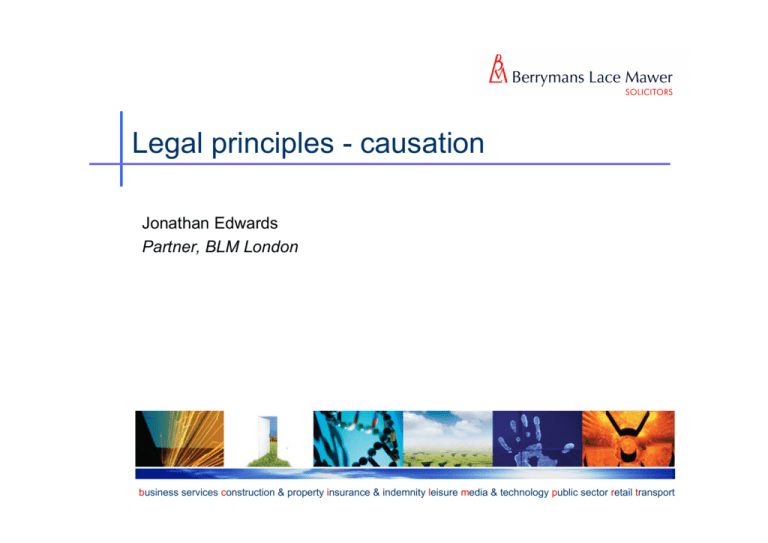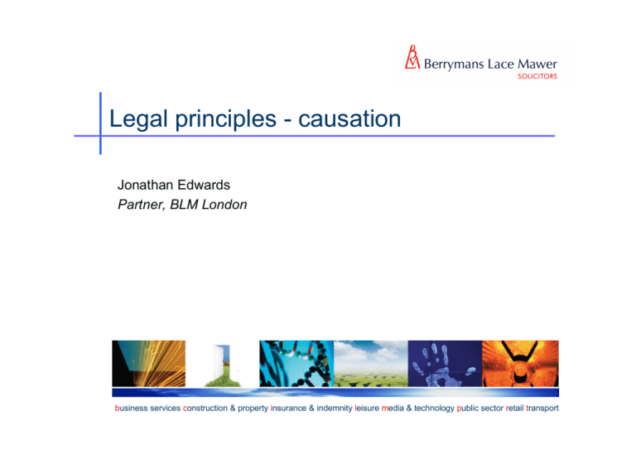
Attorney contract law is an intricate field that governs the creation, interpretation, and enforcement of agreements between individuals and entities. It’s a critical aspect of legal practice, ensuring fairness and clarity in business dealings, personal transactions, and a wide range of other agreements.
From drafting contracts to resolving disputes, attorneys play a vital role in navigating the complexities of contract law. They provide expert guidance on legal requirements, ensure contracts are enforceable, and protect their clients’ interests throughout the contract lifecycle.
Types of Contracts
A contract is a legally binding agreement between two or more parties that creates mutual obligations. Contracts are essential in various aspects of business and personal life, enabling individuals and organizations to engage in transactions, allocate resources, and manage risks. Understanding the different types of contracts is crucial for ensuring that agreements are legally sound and enforceable.
Express Contracts
Express contracts are formed when the terms of the agreement are explicitly stated, either orally or in writing. These contracts are characterized by clear and unambiguous language, leaving no room for ambiguity or interpretation.
- Oral Contracts: Agreements that are made verbally. These contracts are often used for smaller transactions or informal agreements, but they can be difficult to prove in court.
- Written Contracts: Agreements that are put in writing. Written contracts provide a tangible record of the agreement and are generally easier to enforce than oral contracts.
Examples of express contracts include:
- Employment contracts: Agreements between an employer and an employee outlining the terms of employment.
- Sales contracts: Agreements for the purchase and sale of goods or services.
- Leases: Agreements for the rental of property.
Implied Contracts
Implied contracts arise from the conduct of the parties involved, rather than from explicit statements. These contracts are based on the principle of “implied-in-fact,” where the actions of the parties suggest the existence of an agreement.
To establish an implied contract, the following elements must be present:
- Offer: One party must make an offer, either explicitly or implicitly, to provide goods or services.
- Acceptance: The other party must accept the offer through their actions or conduct.
- Consideration: Both parties must exchange something of value.
Examples of implied contracts include:
- Ordering food at a restaurant: When you order food at a restaurant, you are implicitly agreeing to pay for the meal.
- Hiring a plumber to fix a leak: When you hire a plumber to fix a leak, you are implicitly agreeing to pay for their services.
Bilateral Contracts
Bilateral contracts involve a promise exchanged for a promise. Both parties make promises to each other, creating mutual obligations. These contracts are commonly found in business transactions, where each party undertakes a specific action in exchange for the other party’s action.
Examples of bilateral contracts include:
- Sales contracts: The buyer promises to pay for the goods, and the seller promises to deliver the goods.
- Employment contracts: The employer promises to pay wages, and the employee promises to perform work.
- Leases: The landlord promises to provide the property, and the tenant promises to pay rent.
Unilateral Contracts
Unilateral contracts involve a promise exchanged for an action. One party makes a promise, and the other party accepts the promise by performing the requested action. These contracts are less common than bilateral contracts but are used in specific situations.
Examples of unilateral contracts include:
- Reward offers: A reward is offered for the return of a lost pet. The person who finds the pet and returns it accepts the offer by performing the action.
- Contests: A prize is offered for the best entry in a contest. The person who submits the winning entry accepts the offer by performing the action.
Contracts of Adhesion
Contracts of adhesion, also known as “take-it-or-leave-it” contracts, are contracts that are presented on a “standard form” basis, with little or no room for negotiation. These contracts are often used by businesses with significant market power, where the other party has limited bargaining power.
While contracts of adhesion are legally enforceable, courts may scrutinize them to ensure that they are not unconscionable or unfair. This means that the terms of the contract must be reasonable and not overly burdensome for the weaker party.
Examples of contracts of adhesion include:
- Insurance policies: Insurance companies typically use standard form policies that offer limited room for negotiation.
- Credit card agreements: Credit card companies often present contracts with terms that are not easily negotiable.
- Software licenses: Software companies often use standard form licenses that users must accept before using the software.
Contract Interpretation and Enforcement
Contract interpretation and enforcement are crucial aspects of contract law, as they determine how agreements are understood and how breaches are addressed. Understanding the principles governing contract interpretation and the available enforcement mechanisms is essential for parties involved in contractual relationships.
Rules of Contract Interpretation
The interpretation of contracts aims to ascertain the parties’ intentions as expressed in the written agreement. Courts employ various rules to guide this process, ensuring that contracts are interpreted fairly and consistently.
- Plain Meaning Rule: This rule dictates that words in a contract should be given their ordinary and common meaning, unless the context suggests otherwise. Courts prioritize the plain language of the contract and avoid resorting to extrinsic evidence unless ambiguity exists.
- Parole Evidence Rule: This rule prohibits the introduction of extrinsic evidence, such as prior negotiations or agreements, to contradict or vary the terms of a written contract. The rule aims to ensure that written contracts are the definitive expression of the parties’ agreement and prevent disputes arising from conflicting evidence.
- Principle of Good Faith: The principle of good faith requires parties to act honestly and fairly in their contractual dealings. While not explicitly stated in every contract, this principle is often implied in commercial contracts, obligating parties to avoid actions that undermine the spirit of the agreement.
Methods of Contract Enforcement
When a party breaches a contract, the non-breaching party may seek legal remedies to enforce the agreement and compensate for the breach. Courts have various methods available to achieve this, each with its own purpose and application.
- Specific Performance: This remedy compels the breaching party to perform the agreed-upon obligations, rather than simply paying damages. It is typically granted when monetary damages are inadequate, such as in cases involving unique or irreplaceable goods or services. For example, in a contract for the sale of a rare painting, specific performance may be ordered if the painting is considered unique and cannot be easily replaced with another.
- Monetary Damages: This is the most common remedy for breach of contract, aiming to compensate the non-breaching party for the financial losses incurred as a result of the breach. Damages can be awarded in various forms, such as compensatory damages, consequential damages, and punitive damages, depending on the nature of the breach and the extent of the losses.
- Injunctions: Injunctions are court orders prohibiting a party from performing a specific action, such as preventing the breach of a non-compete agreement. They are typically granted when monetary damages are insufficient to protect the non-breaching party’s interests.
Examples of Contract Interpretation and Enforcement Cases
- Raffles v. Wichelhaus (1864): This classic case illustrates the application of the plain meaning rule and the principle of mutual mistake. The parties agreed to buy and sell cotton arriving on the ship “Peerless” from Bombay. However, there were two ships named “Peerless” arriving from Bombay, one in October and another in December. The court held that there was no binding contract because the parties had different ships in mind, demonstrating that the parties had not reached a mutual understanding on the essential terms of the agreement.
- Frigaliment Importing Co. v. B.N.S. International Sales Corp. (1960): This case involved a dispute over the definition of “chicken” in a contract for the sale of poultry. The court considered evidence from industry standards, trade usage, and prior dealings to determine the parties’ intended meaning. The court ultimately concluded that the term “chicken” referred to a broad category of poultry, not just young chickens, demonstrating the importance of considering industry practices and context when interpreting contract terms.
- Jacob & Youngs, Inc. v. Kent (1921): This case highlights the principle of substantial performance and the concept of “material breach.” The contractor in this case used a different brand of pipe than specified in the contract, but the substituted pipe was of equal quality and value. The court held that the deviation from the contract was not a material breach and the contractor was entitled to payment, demonstrating that minor deviations from the contract terms may not always constitute a breach.
Common Contract Clauses

Contract clauses are specific provisions that address particular aspects of the agreement between parties. These clauses are essential in defining the rights, obligations, and expectations of each party, mitigating potential risks, and ensuring a smooth and fair contractual relationship.
Warranties
Warranties are promises made by one party, typically the seller, about the quality, performance, or characteristics of goods or services provided. They are a crucial part of many contracts, particularly those involving the sale of goods, where the buyer relies on the seller’s expertise and assurances.
- Express Warranties: These warranties are explicitly stated in the contract, either orally or in writing. They can be specific to the product or service, such as a warranty for a specific period or a promise of certain performance levels.
- Implied Warranties: These warranties are not explicitly stated but are implied by law based on the nature of the transaction. For example, the implied warranty of merchantability guarantees that goods are fit for their ordinary purpose.
Legal Risks and Benefits
- Risks: Warranties can expose the warranting party to potential liability if the goods or services fail to meet the promised standards. This could result in financial losses, product recalls, or legal action from the other party.
- Benefits: Warranties can enhance the value of the goods or services in the eyes of the buyer, increasing sales and customer satisfaction. They also demonstrate the seller’s confidence in the quality of their products or services.
Example: In a contract for the sale of a new car, the manufacturer may provide an express warranty covering defects in materials and workmanship for a specific period. This warranty gives the buyer assurance that the car will function as expected and provides a recourse if problems arise.
Indemnities
Indemnity clauses are provisions where one party agrees to compensate the other party for any losses or damages arising from specific events or actions. These clauses are often used to allocate risk and protect parties from potential financial exposure.
- Indemnitor: The party who agrees to compensate for losses.
- Indemnitee: The party who is entitled to compensation.
Legal Risks and Benefits
- Risks: The indemnitor faces the risk of having to pay significant financial compensation if the indemnified event occurs. The scope of the indemnity should be carefully defined to avoid unforeseen liabilities.
- Benefits: The indemnitee gains protection from potential financial losses, providing peace of mind and reducing the risk of financial hardship.
Example: In a construction contract, the contractor may agree to indemnify the owner for any claims arising from injuries sustained by third parties on the construction site. This protects the owner from potential lawsuits and financial burdens.
Limitation of Liability
Limitation of liability clauses limit the amount of damages that one party can recover from the other party in the event of a breach of contract or other legal claim. These clauses are designed to protect parties from excessive financial exposure and to establish a predictable framework for liability.
- Exclusions: Some clauses may exclude liability for certain types of damages, such as consequential or indirect damages.
- Caps: Others may set a maximum amount of damages that can be recovered, regardless of the actual losses incurred.
Legal Risks and Benefits
- Risks: The party whose liability is limited may face criticism for attempting to avoid responsibility for their actions. In some jurisdictions, limitation clauses may be unenforceable if they are deemed to be unconscionable or unfair.
- Benefits: Limitation of liability clauses provide predictability and certainty for both parties, helping to manage financial risk and avoid potentially ruinous legal claims.
Example: In a software licensing agreement, the software provider may limit its liability for damages caused by software defects to the purchase price of the software. This protects the provider from potentially unlimited liability while providing the buyer with a reasonable level of protection.
Dispute Resolution Clauses
Dispute resolution clauses specify the method for resolving any disagreements or disputes that may arise between the parties. These clauses are crucial for ensuring a timely and cost-effective resolution of conflicts.
- Negotiation: Parties may agree to attempt to resolve disputes through negotiation or mediation.
- Arbitration: This involves submitting the dispute to a neutral third party for a binding decision.
- Litigation: This involves filing a lawsuit in court to resolve the dispute.
Legal Risks and Benefits
- Risks: If the dispute resolution process is not carefully defined, it can lead to delays, increased costs, and potential legal challenges.
- Benefits: Dispute resolution clauses can help to avoid costly and time-consuming litigation, promote a more amicable resolution of disputes, and ensure that the process is fair and impartial.
Example: In a commercial lease agreement, the parties may agree to resolve any disputes through binding arbitration. This allows for a more streamlined and cost-effective resolution compared to traditional litigation.
Contract Negotiation and Drafting
Contract negotiation and drafting are critical components of the contract law process. Effective negotiation involves understanding the other party’s interests, identifying potential areas of compromise, and using persuasive communication techniques. Drafting contracts requires clear and concise language, avoiding ambiguity, and ensuring completeness. These processes are essential for establishing legally binding agreements that protect the interests of all parties involved.
Negotiation Strategies
Negotiation strategies are crucial for achieving favorable outcomes in contract negotiations. Understanding the other party’s interests and identifying potential areas of compromise are essential for successful negotiation. Persuasive communication techniques can help facilitate agreement and ensure that all parties feel heard and understood.
- Understanding the Other Party’s Interests: Before entering into negotiations, it is essential to thoroughly understand the other party’s interests and objectives. This can be achieved through research, due diligence, and open communication. By understanding their motivations, negotiators can develop strategies that address their concerns and create mutually beneficial outcomes.
- Identifying Potential Areas of Compromise: Successful negotiations often involve identifying areas where both parties can make concessions. This requires a willingness to be flexible and creative in finding solutions that meet the needs of both sides. Identifying common ground and exploring alternative options can lead to mutually acceptable agreements.
- Using Persuasive Communication Techniques: Effective communication is crucial for successful negotiations. Negotiators should use clear, concise language, active listening skills, and persuasive arguments to convey their positions effectively. Using data, evidence, and logical reasoning can strengthen their arguments and increase the likelihood of reaching an agreement.
Contract Drafting Best Practices, Attorney contract law
Contract drafting is a specialized skill that requires attention to detail, clarity, and completeness. Using clear and concise language, avoiding ambiguity, and ensuring that all essential terms are included are essential for creating legally binding agreements.
- Clear and Concise Language: Contracts should be written in plain language that is easy to understand. Avoid using technical jargon or legalese that may be confusing or ambiguous. Using short, simple sentences and active voice can improve clarity and readability.
- Avoiding Ambiguity: Ambiguity can lead to disputes and misunderstandings. To avoid this, contracts should be drafted with precise language that leaves no room for interpretation. Defining key terms and using specific language can help reduce the risk of ambiguity.
- Ensuring Completeness: Contracts should cover all essential terms and conditions of the agreement. This includes the parties involved, the subject matter, the price, the payment terms, the delivery date, and any other relevant details. Failing to include essential terms can create legal issues and weaken the contract.
Examples of Effective Negotiation Tactics
Effective negotiation tactics can help negotiators achieve favorable outcomes in contract negotiations. Using a combination of strategies, negotiators can leverage their strengths and minimize potential risks.
- Using BATNA (Best Alternative to a Negotiated Agreement): BATNA is the best alternative option a negotiator has if negotiations fail. Understanding BATNA can provide a benchmark for evaluating potential agreements and help negotiators determine their walking away point.
- Anchoring: Anchoring involves setting a starting point for negotiations. By presenting a strong initial offer, negotiators can influence the subsequent negotiation process and potentially secure a favorable outcome.
- Framing: Framing refers to the way information is presented during negotiations. By framing information in a way that is advantageous to their position, negotiators can influence the other party’s perception and increase the likelihood of reaching an agreement.
Examples of Effective Contract Drafting Techniques
Effective contract drafting techniques ensure that contracts are clear, complete, and legally sound. Using specific language, defining key terms, and incorporating essential clauses can strengthen the contract and minimize the risk of disputes.
- Using Defined Terms: Defining key terms within the contract can help ensure clarity and avoid ambiguity. For example, defining terms such as “services,” “deliverables,” or “payment” can prevent misunderstandings and disputes.
- Incorporating Essential Clauses: Contracts should include essential clauses that address key aspects of the agreement. These clauses can include representations and warranties, indemnification provisions, dispute resolution mechanisms, and termination provisions.
- Using Boilerplate Clauses: Boilerplate clauses are standard clauses that are commonly included in contracts. These clauses can address issues such as confidentiality, governing law, and choice of forum.
Contract Law in Specific Industries

Contract law plays a crucial role in various industries, shaping business relationships and ensuring the fulfillment of obligations. Understanding the nuances of contract law in specific industries is essential for businesses to navigate complex legal landscapes and mitigate potential risks. This section will delve into the unique considerations and challenges of contract law in technology, healthcare, and real estate, three industries with distinct legal frameworks and contractual practices.
Technology Industry
The technology industry is characterized by rapid innovation, complex intellectual property rights, and evolving legal landscapes. Contracts in this industry often involve the transfer of technology, software licensing, data privacy, and cybersecurity agreements.
- Software Licensing Agreements: These agreements Artikel the terms of use for software, including licensing fees, intellectual property rights, and limitations on use.
- Non-Disclosure Agreements (NDAs): NDAs are crucial for protecting confidential information, such as trade secrets, during negotiations, collaborations, and employment relationships.
- Data Privacy and Security Agreements: With the increasing reliance on data, contracts must address data privacy and security considerations, including compliance with regulations like GDPR and CCPA.
Attorneys play a critical role in technology contracts by:
- Negotiating and drafting contracts: Attorneys ensure that contracts protect their clients’ interests, including intellectual property rights, liability limitations, and data privacy provisions.
- Analyzing and mitigating risks: Attorneys assess potential risks associated with technology contracts, such as intellectual property infringement, data breaches, and regulatory compliance issues.
- Providing legal advice: Attorneys provide guidance on navigating complex legal issues, such as intellectual property licensing, data privacy laws, and cybersecurity regulations.
Healthcare Industry
The healthcare industry is heavily regulated, with strict laws governing patient privacy, medical records, and healthcare services. Contracts in this industry often involve medical services, insurance, research, and pharmaceutical agreements.
- Patient Care Agreements: These agreements Artikel the terms of medical services provided to patients, including payment, treatment options, and patient rights.
- Health Insurance Contracts: These agreements define the terms of coverage between insurers and policyholders, including premiums, benefits, and exclusions.
- Research Agreements: These agreements govern research collaborations, including intellectual property rights, data sharing, and ethical considerations.
Attorneys in the healthcare industry are crucial for:
- Ensuring compliance with regulations: Attorneys ensure that healthcare contracts comply with complex regulations like HIPAA, FDA, and state-specific laws.
- Protecting patient privacy: Attorneys help healthcare providers establish contracts that safeguard patient privacy and comply with data protection regulations.
- Navigating complex legal issues: Attorneys provide legal guidance on issues such as medical malpractice, insurance claims, and research ethics.
Real Estate Industry
Real estate contracts are essential for transactions involving the purchase, sale, lease, or development of property. These contracts typically involve detailed terms regarding property ownership, financing, and legal obligations.
- Purchase Agreements: These agreements Artikel the terms of sale for a property, including price, closing date, and contingencies.
- Lease Agreements: These agreements define the terms of renting a property, including rent payments, lease duration, and tenant responsibilities.
- Construction Contracts: These agreements govern the construction or renovation of a property, including scope of work, payment schedules, and warranties.
Real estate attorneys play a vital role in:
- Drafting and reviewing contracts: Attorneys ensure that real estate contracts protect their clients’ interests, including property rights, financing terms, and legal obligations.
- Conducting due diligence: Attorneys perform thorough legal research to ensure the property title is clear, zoning regulations are met, and there are no outstanding liens or encumbrances.
- Resolving disputes: Attorneys assist in resolving legal disputes that may arise during real estate transactions, such as boundary disputes, contract breaches, or title issues.
Emerging Trends in Contract Law

The legal landscape of contract law is constantly evolving, driven by technological advancements, changing business practices, and societal shifts. This dynamism presents both challenges and opportunities for attorneys and their clients, requiring them to adapt and navigate these emerging trends effectively. This section will explore some of the most significant developments shaping the future of contract law.
The Rise of Electronic Contracts
The increasing prevalence of electronic transactions has led to a surge in the use of electronic contracts, also known as e-contracts. These contracts are formed and executed entirely online, using digital signatures and other electronic authentication methods. The legal validity of e-contracts has been established in many jurisdictions, with laws like the Uniform Electronic Transactions Act (UETA) providing a framework for their enforceability.
The rise of e-contracts has several implications for attorneys and their clients:
- Increased efficiency and speed: E-contracts eliminate the need for physical signatures and paper-based processes, enabling faster contract formation and execution. This can be particularly beneficial for businesses operating in a fast-paced environment.
- Reduced costs: The use of electronic signatures and online platforms can significantly reduce printing, mailing, and storage costs associated with traditional paper contracts.
- Enhanced security: Secure electronic signature platforms offer robust authentication mechanisms, reducing the risk of fraud and unauthorized access.
- Global reach: E-contracts facilitate cross-border transactions, enabling businesses to engage with partners and customers worldwide.
However, the use of e-contracts also presents unique challenges:
- Ensuring electronic signatures are legally valid: Attorneys must ensure that electronic signatures meet the requirements of applicable laws and regulations to be considered legally binding.
- Maintaining electronic evidence: Proper storage and preservation of electronic contracts are crucial for their enforceability.
- Addressing jurisdictional issues: When parties are located in different jurisdictions, determining the governing law for an e-contract can be complex.
The Increasing Use of Artificial Intelligence in Contract Analysis
Artificial intelligence (AI) is transforming the legal profession, including contract law. AI-powered tools can analyze contracts, identify key clauses, and flag potential risks or inconsistencies. These tools can automate repetitive tasks, freeing up lawyers to focus on more strategic aspects of contract negotiation and drafting.
Examples of how AI is changing contract analysis:
- Contract review and due diligence: AI-powered platforms can scan contracts for red flags, identify potential breaches, and highlight areas that require further scrutiny.
- Contract negotiation: AI can analyze contract data and provide insights into negotiation strategies, helping lawyers identify areas for compromise and leverage.
- Contract drafting: AI-powered tools can assist in generating contract drafts, based on pre-defined templates and user inputs.
- Contract management: AI can track contract deadlines, manage renewals, and automate contract administration tasks.
The use of AI in contract law raises several legal and ethical considerations:
- Data privacy and security: AI tools often process sensitive data, raising concerns about data privacy and security breaches.
- Bias and discrimination: AI algorithms can perpetuate biases present in the data they are trained on, potentially leading to discriminatory outcomes.
- Liability and accountability: Determining liability for errors or omissions made by AI tools can be challenging.
The Evolving Legal Landscape of Online Transactions
The rise of e-commerce and online marketplaces has created a new legal landscape for contract law, particularly regarding consumer protection and data privacy. Laws like the General Data Protection Regulation (GDPR) and the California Consumer Privacy Act (CCPA) have introduced stringent requirements for businesses handling personal data.
The evolving legal landscape of online transactions presents several challenges for attorneys and their clients:
- Compliance with data privacy regulations: Businesses must ensure their contracts comply with data privacy regulations, including obtaining consent, providing transparency, and implementing appropriate security measures.
- Addressing online fraud and cybercrime: Attorneys must advise clients on mitigating risks associated with online fraud and cybercrime, including implementing robust security protocols and contract clauses addressing liability for data breaches.
- Navigating evolving legal standards: The legal landscape of online transactions is constantly evolving, requiring attorneys to stay informed of new laws and regulations.
Final Conclusion
Understanding attorney contract law is essential for anyone involved in legal agreements, whether as a business owner, individual, or organization. By engaging legal professionals, individuals can navigate the complexities of contract law, mitigate risks, and ensure their agreements are legally sound and enforceable. The field continues to evolve with new technologies and changing legal landscapes, making it crucial to stay informed and seek expert advice.
Clarifying Questions: Attorney Contract Law
What are the common types of contracts?
Common types of contracts include express contracts, implied contracts, bilateral contracts, unilateral contracts, and contracts of adhesion. Each type has unique characteristics and legal implications.
How can I avoid legal disputes related to contracts?
Consulting an attorney to draft, review, and negotiate contracts is crucial. Attorneys can ensure contracts are clear, complete, and compliant with legal requirements, minimizing the risk of disputes.
What are the consequences of a contract lacking essential elements?
A contract lacking essential elements, such as offer, acceptance, or consideration, may be deemed unenforceable. This can result in legal disputes and financial losses.





